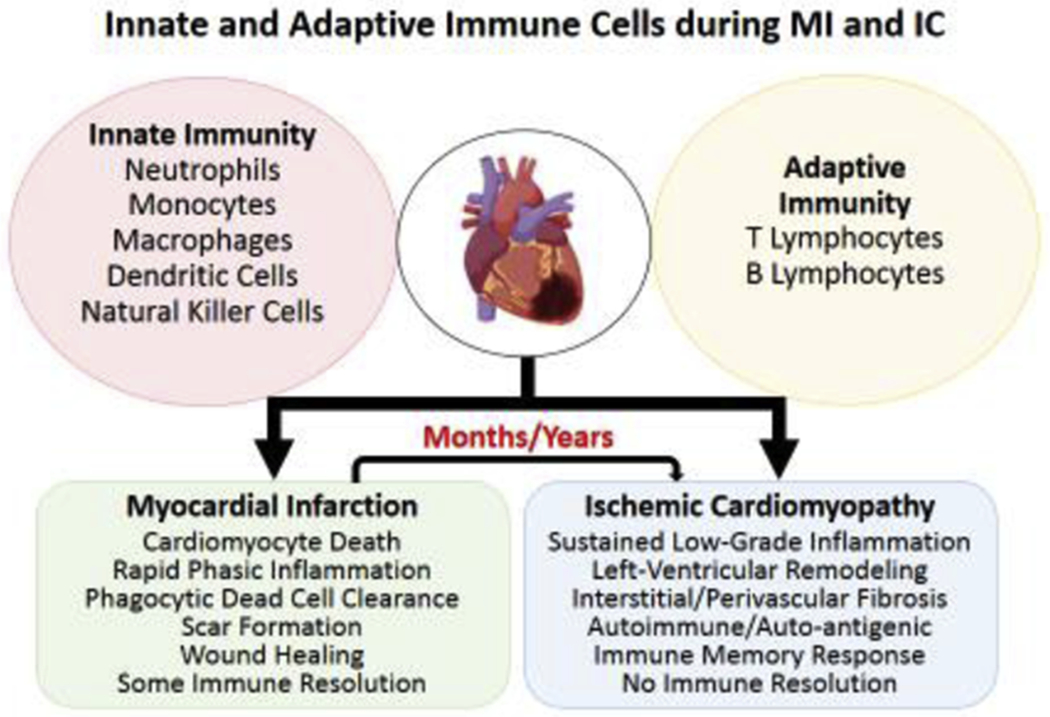Figure 1:

Schematic showing several key players of the innate and adaptive immune system known to play an important role in wound-healing post-myocardial infarction (MI), and mediating left-ventricular remodeling during ischemic cardiomyopathy (IC) in preclinical studies. Both innate and adaptive immune cells function in an interdependent complex network where one cell-type regulates and influences the behavior of others to achieve an overall goal of wound-healing, scar formation and ultimately immune resolution post-MI. However, the same network of immune cells responds differently to sustained low-grade inflammation and undergo a phenotypic change to mediate maladaptive tissue-remodeling during IC. If one player is more pathological/critical than the others is not known. Some of the components were designed using ‘Biorender’.
